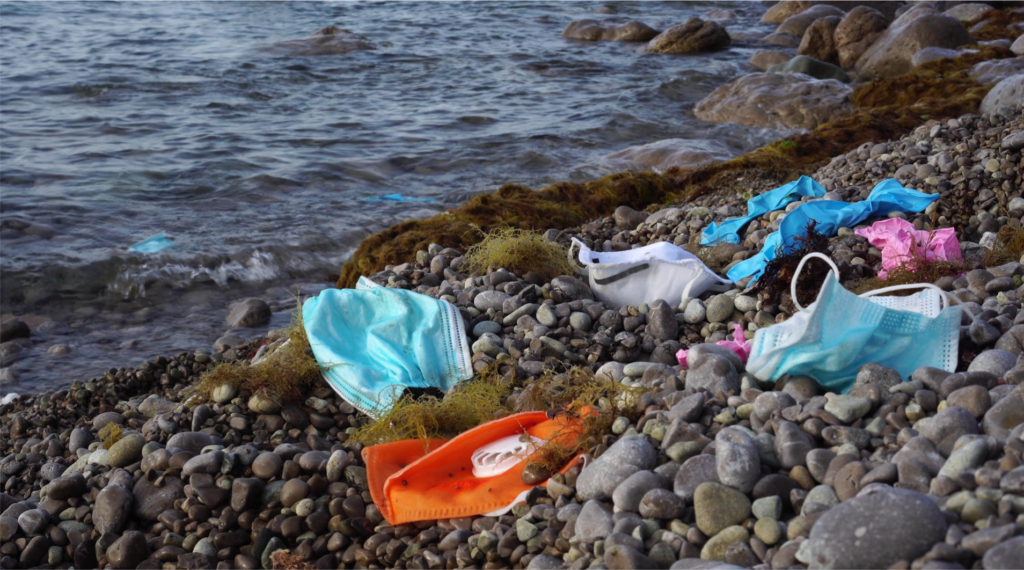By Caitlin Rothermel
Respiratory diseases are surging again, and there is disagreement about what we should do in terms of masking. Some people are masking when they go out, some are no longer masking, and some would like everyone to wear a mask.
There’s been no answer that makes sense for everyone, and this puts us all at a disadvantage. But there are a number of reasons why it does not work any longer for us to mask as a society.
In February of 2022, I was invited to conduct a medical literature search on whether masks prevented COVID-19 transmission. Over the past 40 years, researchers have evaluated whether the day-to-day use of facial masks blocked respiratory particle transfer to prevent diseases like influenza, the first SARS-CoV-1 (in China in 2002-2003), and now SARS-CoV-2. I looked at hundreds of articles.
Most of these studies were conducted in the real world – in hospital, healthcare, household, or school settings. Many were conducted in very crowded places, with masks worn for hours at a time, or even a majority of the day. There were also mechanistic studies; in these, masks were force-tested in a laboratory to see if very small particles could penetrate.
What were the findings? Cloth or surgical masks did not protect from infection or particle transmission. However, masks with improved filtration capacity, like N95s, were possibly protective, but for the wearer only.
When designed and used properly, N95 masks will block a good proportion of very small (virus-sized) particulates. This has been referred to as “one-way masking,” and it is an important strategy that some people use to avoid respiratory infections.
If this makes you wonder whether we all should wear N95 masks, you need to understand that, to mask for self-protection and to do it effectively, you need to commit at a number of levels.
For your N95 to work, you need to fit it properly on your face. Healthcare professionals know how to do this, and you can learn from videos online. Any gaps in the mask’s seal provide an opening for particles. So, if your glasses fog up, you have a leak. Likewise, if you have a beard, you won’t be able to seal your mask.
If you wear your N95 in a restaurant only until your meal is served, or at a meeting only until it is your turn to talk, your earlier efforts will have been for nothing. You also need to plan to replace your mask regularly. Our supply chain is unpredictable, and only becoming more so, so buying in bulk makes sense. A single N95 may last about a week with occasional use, but more frequent replacement is needed if you wear it all day.
You can’t wash and reuse N95s, or put them out in the sun to disinfect, because it will damage the mask’s electrostatic layer. You always need to replace your N95 if it gets wet, dirty, or if you notice it getting harder to breathe.
N95s must also be stored carefully to avoid contamination. A clean paper bag is a good place, but not an airtight container (because you don’t want to turn your mask into a petri dish). Evidence shows that N95 masks can be cleaned using a type of UV radiation, but there is no product yet that’s been designed specifically do to this.
These complex and careful masking steps may be doable by the individual, but not by everyone in the community. This individual decision is also not without risk. Daily, ongoing mask-wearing actually decreases your personal immune status – it lowers white blood cell count and activity.
We also tend to overlook some other, big problems with widespread masking. Do you remember plastic drinking straws? As of 2022, a King County law prohibits businesses from automatically providing single-use utensils like drinking straws. The goal is to reduce waste and prevent environmental pollution due to plastics.
Masks have microplastics in them, and according to the United Nations, 75% of used masks end up in landfills or the ocean. China alone now manufactures 5.3 billion masks each year, and they are only responsible for one-half of global production. Masks have become a very profitable industry. In 2019 (before COVID-19), the global market for face masks was $2.9 billion dollars. In 2020, this had increased to $32.3 billion, and continues to rise.
Masks also have some substances in them that you just don’t want to breathe in. A study conducted in England found antimony, cadmium, copper, and lead in the fibers of face masks, and research from Germany found formaldehyde, perfluorocarbons, and other toxic chemicals.
These substances are all definitely bad for humans, and even worse is the way they will leach into the ocean and the land, making them a brand-new source of waste and contamination. To me, this conflicts directly with widely shared environmental priorities.
A role of public health is to develop community recommendations that make sense when key medical, environmental, and economic issues are all considered. When there are too many flaws in a plan, its relevance to the community cannot hold. The issue becomes a private concern.

